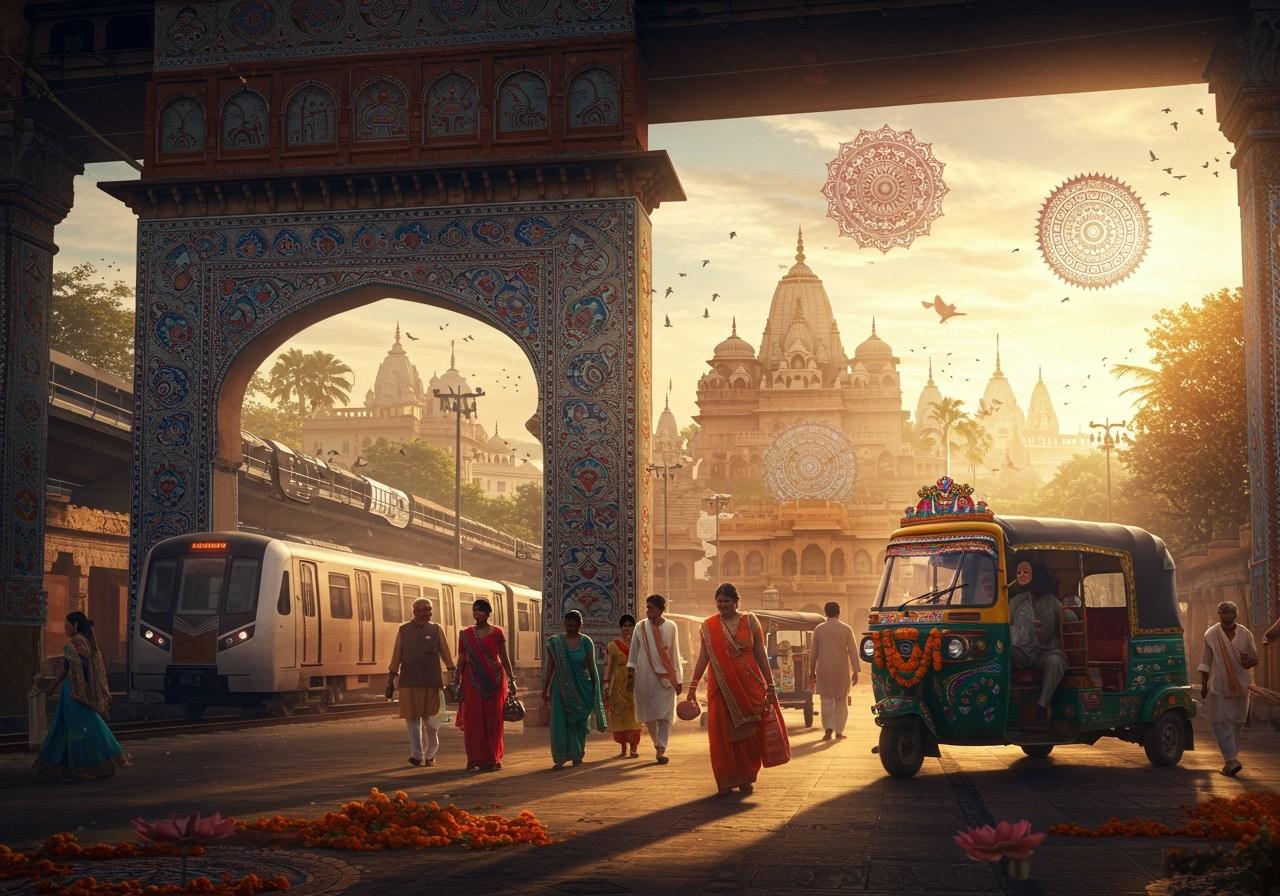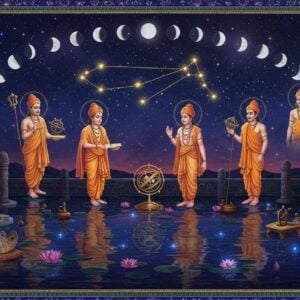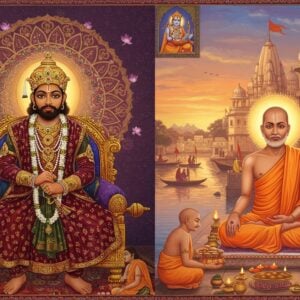
India, a land of vibrant traditions and diverse cultures, boasts a rich transportation system shaped by centuries of history, geographical nuances, and cultural influences. This system, comprising roadways, railways, airways, and waterways, plays a vital role in connecting people, facilitating trade, and promoting economic growth. Understanding the various modes of transport and their cultural significance offers a glimpse into India’s unique blend of tradition and modernity.
Types of Transport in India
India offers a diverse array of transportation options, each reflecting its cultural heritage:
- Traditional Modes: Bullock carts and cycle rickshaws, commonly seen in rural areas, represent a connection to historical practices while coexisting with modern lifestyles. These modes often serve as essential links within smaller communities and agricultural areas.
- Indian Railways: The Indian Railways, one of the world’s largest networks, symbolizes unity and connectivity, linking diverse regions across the nation. This extensive network plays a crucial role in both passenger and freight transport.
- Air Travel: The aviation sector in India has witnessed significant growth, with increased accessibility to domestic and international flights. This expansion demonstrates India’s increasing global integration and provides convenient travel options.
- Metro Systems: Modern metro systems in major cities like Delhi and Mumbai exemplify efficient public transport and urban modernization. These systems address the challenges of traffic congestion and contribute to a faster-paced urban life.
- Auto Rickshaws and Taxis: These vehicles are integral to urban mobility, showcasing the vibrant street culture of Indian cities. They provide a readily available mode of transport for short distances.
- Water Transport: Ferries and boats, particularly prominent in regions like Kerala, emphasize the cultural connection to natural landscapes and offer unique travel experiences.
- Buses and Local Trains: These modes serve as the backbone of daily commuting, reflecting the dynamic and bustling nature of Indian city life. They cater to a large segment of the population and are essential for everyday travel.
Cultural Significance of Indian Transport Systems
In India, transportation transcends mere movement; it embodies cultural values and social dynamics:
- Indian Railways: Often referred to as the ‘Lifeline of the Nation,’ the Indian Railways symbolizes cultural integration, connecting diverse communities across vast distances. It serves as a melting pot of cultures and facilitates social interaction.
- Traditional Transport: Bullock carts and other traditional modes represent the legacy of rural life and agricultural practices. They are deeply ingrained in the cultural fabric of rural India.
- Metro Systems: Metro systems have transformed urban culture by promoting efficiency and alleviating traffic congestion, reflecting India’s embrace of modernity. They have become integral to urban life.
- Auto Rickshaws: Auto rickshaws offer an immersive cultural experience, allowing passengers to engage with local life while navigating busy streets. They are a symbol of urban India.
- Water Transport: Water transport in Kerala, with its intricate network of backwaters and canals, exemplifies the harmonious relationship between people and nature. It offers a unique perspective on Kerala’s cultural landscape.
- Buses and Trains: Buses and trains, often crowded with commuters, act as social spaces where diverse cultural interactions unfold daily. They offer a glimpse into the everyday lives of Indians.
- Air Travel: The growth of air travel mirrors India’s growing economic strength and its aspirations to be a key player on the global stage. It symbolizes progress and connectivity.
Key Aspects of Indian Transportation
India’s transportation system is a dynamic blend of traditional and modern elements, deeply rooted in its history, geography, and culture. Each mode plays a unique role in connecting people, facilitating trade, and driving economic growth.
Roadways: The Backbone of India
With approximately 6,700,000 km of roads, India possesses the largest road network worldwide. Roads are the dominant mode of transport, carrying nearly 85% of passenger traffic and over 60% of freight. National Highways link major cities and state capitals, forming the economic backbone of the country. Despite their importance, many roads face challenges related to congestion and maintenance, requiring ongoing development and improvement.
Railways: A Symbol of Unity
The Indian Railways, one of the largest railway networks globally, spans over 63,000 km, connecting all states and playing a crucial role in long-distance travel and freight movement. The railways are not only a means of transportation but also a symbol of national unity and cultural integration, bringing diverse communities closer together.
Airways: Reaching New Heights
India’s aviation sector has experienced remarkable growth, becoming a preferred choice for many travelers due to its speed and convenience. Airways provide a hassle-free travel experience, making them popular for both domestic and international journeys. This growth reflects India’s aspirations as a global player.
Waterways: Navigating Tradition
Water transport, using rivers, canals, and coastal areas, plays a significant role in supporting trade and transportation. Especially in states like Kerala, waterways emphasize the cultural connection to natural landscapes and provide scenic travel experiences. This traditional mode continues to be an important part of the transportation landscape.
Cultural Influences: A Tapestry of Diversity
Indian transportation is not simply about moving goods and people; it is a reflection of the country’s rich cultural and religious diversity. Traditional modes like bullock carts and cycle rickshaws highlight historical practices that remain relevant today. Auto rickshaws provide an immersive cultural experience in the bustling streets of Indian cities. Water transport in Kerala underscores the intimate relationship between people and nature.
For those interested in learning more about the Ramayana and its cultural impact, Poojn.in offers a wealth of resources. Explore articles on Ramayana characters (https://www.poojn.in/post/14840/ramayana-characters-and-life-lessons-2), dharma in the Ramayana (https://www.poojn.in/post/14846/dharma-in-the-ramayana-a-thematic-exploration-2), and timeless lessons from the epic (https://www.poojn.in/post/14853/ramayana-timeless-lessons-for-modern-life-2). You can also delve into the significance of the Ramayana bridge (https://www.poojn.in/post/14809/ramayana-bridge-significance-myth-or-reality-explained-2) and its enduring influence on Indian culture (https://www.poojn.in/post/14843/ramayanas-enduring-influence-on-indian-culture-2).
How Poojn.in Supports Transport-Related Rituals and Customs
Poojn.in recognizes the importance of transport-related customs and ceremonies practiced across India. We offer a wide selection of authentic puja items for vehicle pujas, new vehicle ceremonies, and travel-related rituals. Our offerings include:
- Complete Vaahan Puja kits for new vehicle blessings, ensuring a smooth and prosperous journey.
- Swastik and religious stickers for vehicles, offering protection and blessings on the road.
- Hanuman Chalisa and other protective yantra for safe travel, providing spiritual guidance and safeguarding travelers.
- Traditional coconuts and flowers for vehicle ceremonies, symbolizing auspicious beginnings and good fortune.
- Brass bells and religious symbols for vehicle decoration. Add a touch of tradition and reverence to your vehicle with our selection of bells and symbols.
- Kumkum, rice, and other auspicious items for travel rituals. Prepare for your journeys with our range of sacred items, ensuring blessings and protection throughout your travels.
We deliver these items nationwide, ensuring convenient access for families to maintain traditional practices related to transport and travel. All our products are sourced from verified vendors and temples, guaranteeing authenticity and quality for all ceremonial needs.
Visit Poojn.in or download our mobile app to explore our complete collection of transport-related puja items. We provide detailed product descriptions and usage guidelines to help you perform these important rituals correctly. For those seeking specific items, you can find turmeric (https://www.poojn.in/product/9109/pure-pik-whole-turmeric-sticks-haldi-gatiya-gota-halud-pack-of-1-kg-500-gm-50-gm-25-gm), incense (https://www.poojn.in/product/8473/falcon-brand-indian-sandal-incense-sticks), camphor (https://www.poojn.in/product/7867/ganesh-brand-best-camphor-camphor-cubes), and other essential puja items on our platform.
Embracing Tradition and Progress
India’s transport systems beautifully illustrate the convergence of tradition and progress. From bustling roads to serene waterways, each mode reflects the nation’s rich cultural tapestry. As India continues to embrace advancements, these systems serve as a reminder of its roots and the unity that binds its diverse communities. With every journey, we celebrate India’s vibrant history and dynamic future, ensuring that our travels honor both the past and the promise of tomorrow.
FAQs on India’s Transport Systems: A Cultural Impact Analysis
How many types of transport are available in India? India offers a diverse range of transport systems, including rail, road, air, and waterways, each serving a distinct purpose in connecting different parts of the country. The choice of transport depends on individual needs and preferences.
Which mode of transport is best in India? The “best” mode depends on the specific travel requirements, including distance, budget, and time constraints. Trains are often preferred for long distances, while buses and autos cater to shorter trips within cities and towns. For interstate travel, flights offer the fastest option, while waterways provide scenic journeys in specific regions.
What role does culture play in India’s transport systems? Culture significantly influences travel behavior in India. Traditional festivals and religious events often lead to increased travel, impacting transport schedules and availability. Cultural preferences also play a role in the choice of transport, with some modes holding greater cultural significance than others.
How have India’s transport systems evolved over time? India’s transport systems have undergone a remarkable transformation, from traditional modes like bullock carts to modern trains, airplanes, and metro systems. This evolution reflects the country’s technological advancements and economic growth, continuously adapting to meet the changing needs of its population.


